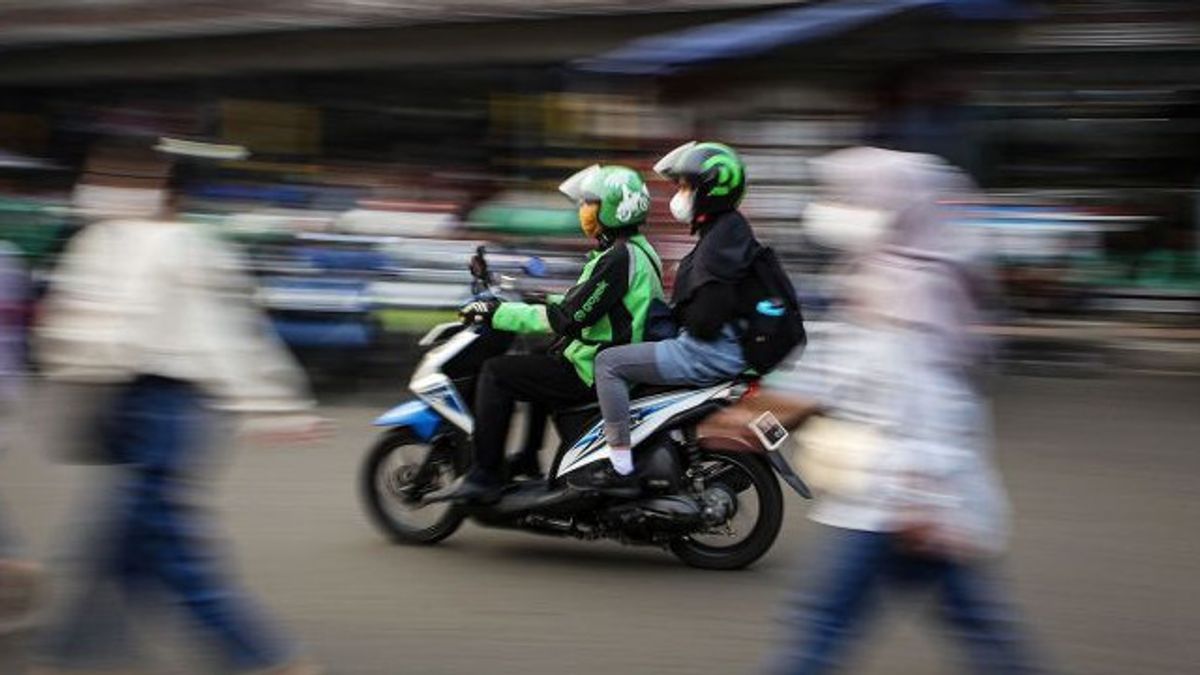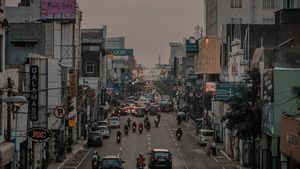JAKARTA - The results of a survey from the Ministry of Transportation which states that online motorcycle taxis (ojol) have become one of the main sources of work that many people rely on during the pandemic, is considered not a surprising phenomenon.
Economist from the Institute for Development of Economics and Finance (Indef) Nailul Huda said that the transportation sector, especially ojol, is currently one of the jobs that many people in Indonesia are engaged in.
"This can be seen from the very large number of ojol in Indonesia, more than 4 million driver partners," Nailul said in his statement, quoted from Antara, Thursday, October 13.
The results of a survey by the Transportation Policy Agency of the Ministry of Transportation (Kemenhub) released in October 2022, showed that almost 60 percent of online motorcycle taxi drivers joined as drivers during the pandemic or in the last two years. The survey entitled Public Perceptions of Adjustment of Online Ojek Transportation Services said that 54 percent of respondents to ojol drivers made the status of ojol drivers their main job.
As is known, ojol has become a mode of consumer transportation from home to activity centers such as offices, shopping centers, and schools. This mode of transportation is considered more practical and faster than other public transportation.
The survey results show that as many as 37.29 percent of respondents who use ojol stated that they use ojol because it is more practical, and 32 percent of other respondents stated that they use ojol because it is faster. While the remaining respondents stated that they used ojol because the location of origin or destination had not been passed by public transportation, and other reasons.
Huda said that most people choose a job as an ojol driver because in terms of time, this job is very flexible. Driver partners can determine their own working hours and income targets. However, the pandemic period has increasingly encouraged ojol drivers to be more active and operate longer to maintain their income level, which must be eroded by the impact of the pandemic.
"In fact, many drivers work between 8-12 hours. If the duration of work is that long, then it can be said that driver partners have made ojol as their main job," said Huda.
According to him, if the majority surveyed by the Ministry of Transportation were those who had joined ojol drivers before the pandemic, of course the number of drivers who stated that they had made ojol drivers their main job, of course the percentage would be even higher.
"From our survey in 2019, or before the pandemic, most of the respondents had made motorcycle taxi drivers their main job, especially now," said Huda.
SEE ALSO:
He said the ojol sector is indeed capable of absorbing unlimited manpower. Even when the Covid-19 pandemic hit and there were many layoffs, the ojol industry was able to absorb workers by offering the opportunity to become driver partners.
"During the pandemic, these driver partners can still have income, especially on food delivery services. This is a blessing in itself for driver partners when many companies are laying off," said Huda.
The ride-hailing industry, continued Huda, also has a broad impact on the community and becomes a cushion when the economic situation starts to become difficult. Not only driver partners can get access, but the entire ecosystem in it also benefits from the presence of this industry. Micro, small and medium enterprises (MSMEs) especially in the food sector and other goods sold through e-commerce are also helped by the presence of the ride-hailing industry, he said.
The English, Chinese, Japanese, Arabic, and French versions are automatically generated by the AI. So there may still be inaccuracies in translating, please always see Indonesian as our main language. (system supported by DigitalSiber.id)










